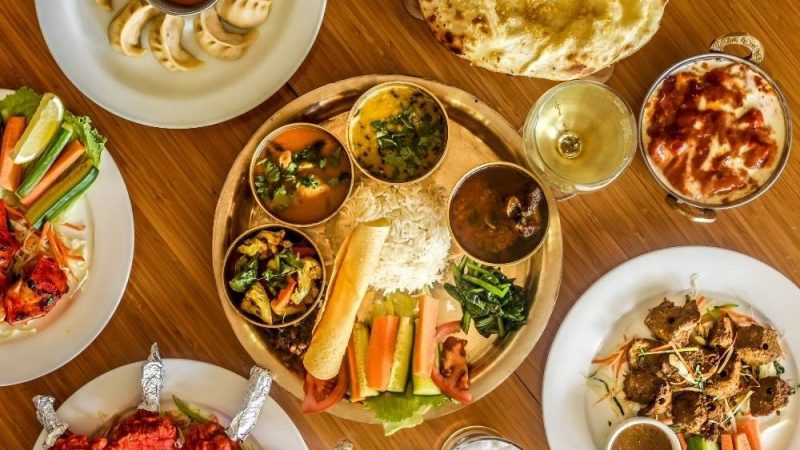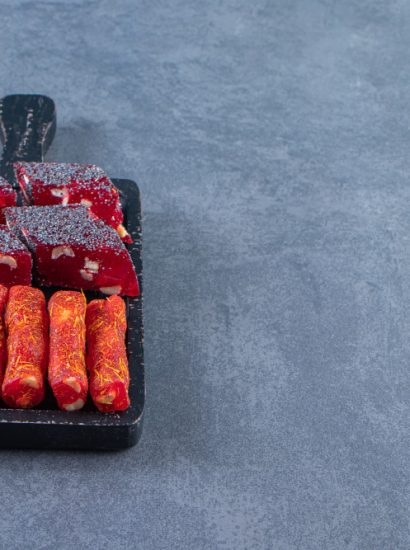Rich in tradition and bursting with bold, earthy flavors, Nepali cuisine is a hidden gem in South Asian gastronomy. Influenced by neighboring India, Tibet, and China — yet distinctively unique — Nepal’s food culture reflects its diverse geography, ethnic groups, and centuries-old culinary heritage.
In this guide, you’ll discover the core dishes, ingredients, cultural influences, and why Nepali cuisine is gaining global attention among foodies and travelers alike.
What Is Nepali Cuisine?
Nepali cuisine encompasses a wide variety of dishes made from locally sourced ingredients such as rice, lentils, vegetables, goat meat, buffalo, and fermented foods. It varies by region — from the Himalayan highlands to the southern Terai plains — and is deeply tied to Nepal’s multicultural identity.
Common Characteristics:
- Balanced use of spices without excessive heat
- Rice-based meals served with lentils and seasonal vegetables
- Heavy use of mustard oil, ghee, ginger, garlic, cumin, and turmeric
- Fermented and pickled side dishes known as achar
Nepali cuisine is often naturally gluten-free and rich in vegetarian options, making it suitable for a variety of diets.
Popular Nepali Dishes You Must Try
Here are the essential dishes that define Nepali cuisine:
- Dal Bhat (Lentils and Rice)
The national staple, eaten daily by many Nepalese.
- Dal = Spiced lentil soup
- Bhat = Steamed white rice
- Served with seasonal vegetables, pickles (achar), spinach, and sometimes meat or egg curry
Fun Fact: Dal Bhat is often eaten twice a day and is central to Nepali home-cooked meals.
Momo (Nepali Dumplings)
A beloved street food snack, similar to Tibetan dumplings.
- Typically filled with minced meat (buffalo, chicken, or vegetables)
- Served steamed, fried, or in a spicy soup known as jhol momo
- Often accompanied by tomato-based dipping sauce or achar
Momos are widely popular in cities like Kathmandu and Pokhara.
Sel Roti
A traditional homemade rice doughnut prepared during festivals like Tihar and Dashain.
- Made from ground rice, sugar, and cardamom
- Deep-fried into crispy, golden rings
- Served with yogurt or tea
Gundruk
A fermented leafy green and Nepal’s national preserved food.
- Made from fermented mustard or radish greens
- Used in soups, stir-fries, or as a side dish
- Rich in probiotics and fiber
Thukpa
A hearty noodle soup with Tibetan roots.
- Typically includes noodles, vegetables, and meat
- Broth is infused with garlic, ginger, and chili
- Common in the Himalayan regions of Nepal
Regional Varieties of Nepali Cuisine
Mountain & Himalayan Region:
- Dishes influenced by Tibetan and Sherpa culture
- High use of barley, buckwheat, and yak products
- Popular dishes: Thukpa, Tsampa, Butter Tea
Middle Hills:
- Base of Nepali cuisine; home to Dal Bhat
- Pickled vegetables, gundruk, and seasonal leafy greens are common
Terai (Lowland Plains):
- Influenced by North Indian cuisine
- Spicier curries, deep-fried snacks like samosa, and rice puddings
Common Ingredients in Nepali Cooking
| Ingredient | Use in Cuisine |
| Rice | Staple grain for main meals |
| Lentils (Masoor, Mung) | Used for soups (dal) |
| Mustard Oil | Main cooking oil, adds pungent flavor |
| Ghee | Clarified butter, used in curries and desserts |
| Timur (Sichuan Pepper) | Adds numbing spice to dishes like momo sauce |
| Turmeric | Anti-inflammatory spice used in almost all curries |
| Garlic & Ginger | Aromatic base for many meals |
Seasonal vegetables, wild herbs, and homemade pickles make every Nepali dish locally fresh and full of variety.
Food and Festivals in Nepali Culture
Food plays a ceremonial and communal role in Nepal. Major festivals like Dashain, Tihar, and Maghe Sankranti feature:
- Special dishes like sel roti, yomari, and meat curries
- Family-style meals with elders and guests
- Offerings to deities and ancestral spirits
In Nepal, sharing food is considered a gesture of respect and love.
Where to Try Nepali Cuisine
In Nepal:
- Local homes and guesthouses offer the most authentic experience
- Try street stalls in Kathmandu for momos and chatpate
- Visit Thamel or Pokhara for diverse restaurant options
Outside Nepal:
- Nepali restaurants in major cities like London, New York, Sydney, Toronto
- Often found in Indian or Himalayan eateries
- Look for authentic dishes labeled Dal Bhat, Momo, Thukpa, or Sel Roti
Conclusion
Whether you’re trekking through the Himalayas or trying a momo stall in Kathmandu, Nepali cuisine offers comfort, flavor, and cultural richness in every bite. With its deep-rooted traditions, diverse regional influences, and health-conscious ingredients, it’s no wonder Nepali food is gaining recognition worldwide.
Ready to explore? Start with a bowl of dal bhat or a plate of steaming momos — and enjoy the delicious simplicity of Nepal’s culinary heritage.
FAQs
1. What is the most popular food in Nepal?
The most popular food is Dal Bhat, a meal of lentils and rice served with vegetables and pickles, eaten daily by most Nepalese.
2. Is Nepali food spicy?
Nepali food uses spices for flavor, but it’s generally less spicy than Indian food. Chili-based pickles and sauces are optional.
3. Is Nepali cuisine vegetarian-friendly?
Yes! Many dishes are naturally vegetarian or vegan, especially in rural areas and during religious observances.
4. What is momo in Nepali cuisine?
Momo is a Nepali-style dumpling, usually filled with meat or vegetables and served with a spicy dipping sauce.
5. How is Nepali cuisine different from Indian food?
While both use similar spices, Nepali cuisine is milder, less oily, and relies more on seasonal, homegrown ingredients.
Also read: Animals on a Safari: 10 Iconic Species Every Traveler Hopes to See









